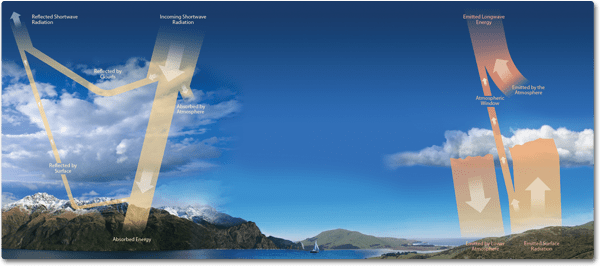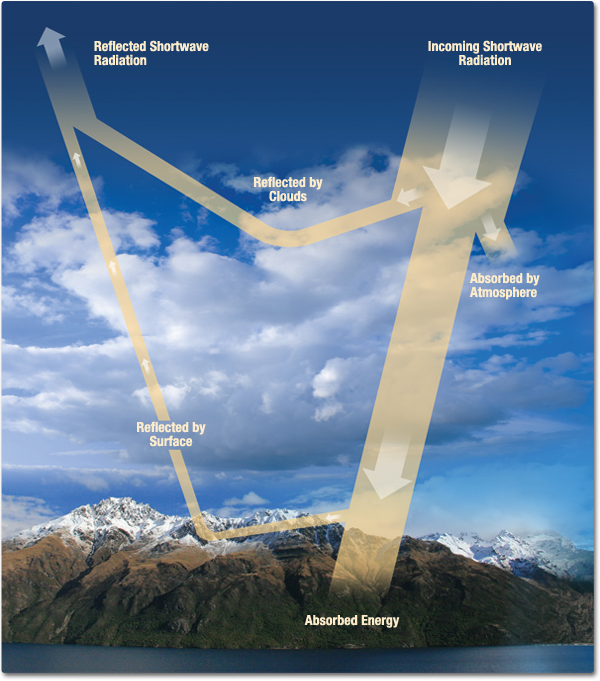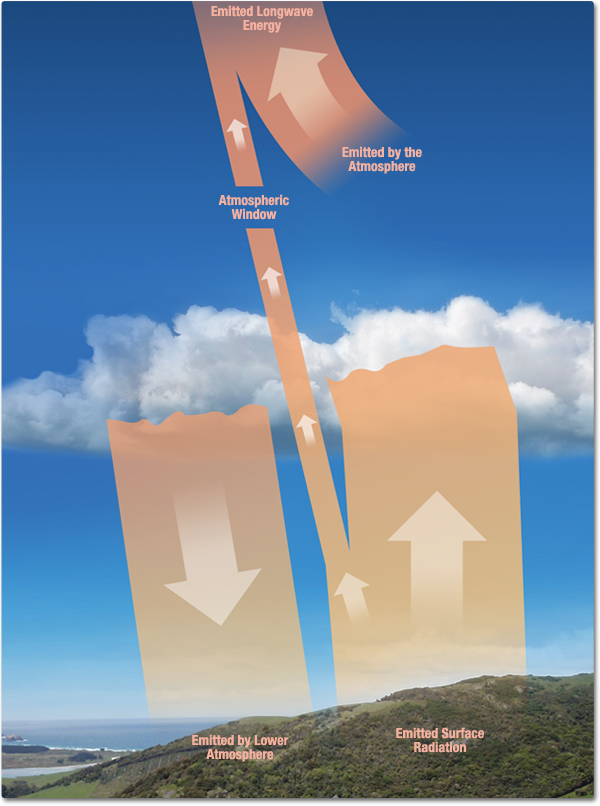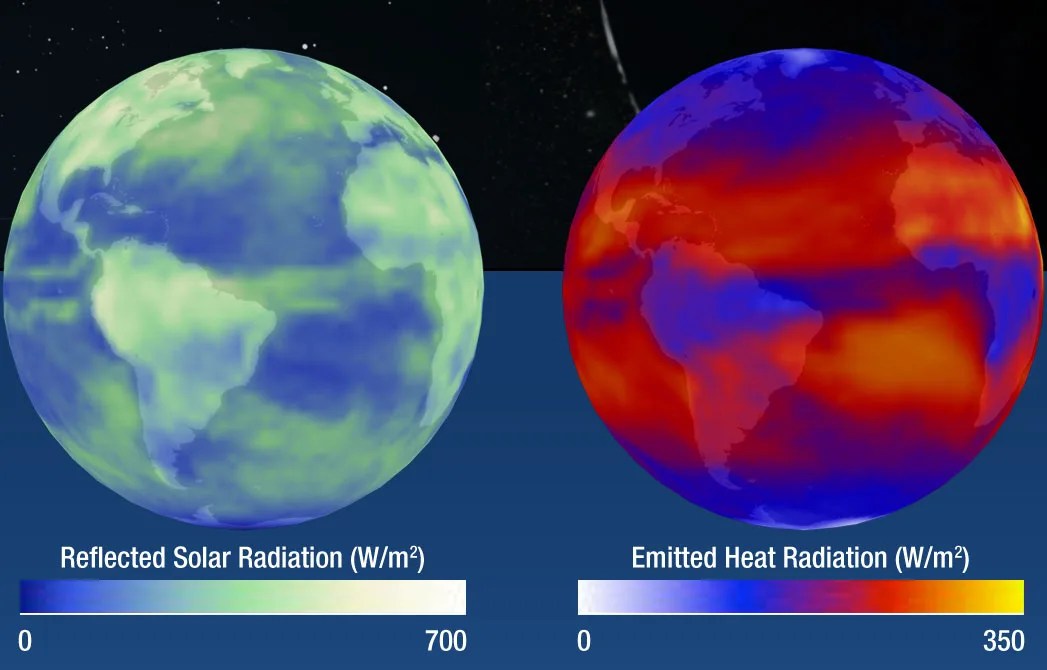The Earth’s Radiation Budget

The energy entering, reflected, absorbed, and emitted by the Earth system are the components of the Earth's radiation budget. Based on the physics principle of conservation of energy, this radiation budget represents the accounting of the balance between incoming radiation, which is almost entirely solar radiation, and outgoing radiation, which is partly reflected solar radiation and partly radiation emitted from the Earth system, including the atmosphere. A budget that's out of balance can cause the temperature of the atmosphere to increase or decrease and eventually affect our climate. The units of energy employed in measuring this incoming and outgoing radiation are watts per square meter (W/m2).

INCOMING SOLAR RADIATION
Incoming ultraviolet, visible, and a limited portion of infrared energy (together sometimes called "shortwave radiation") from the Sun drive the Earth's climate system. Some of this incoming radiation is reflected off clouds, some is absorbed by the atmosphere, and some passes through to the Earth's surface. Larger aerosol particles in the atmosphere interact with and absorb some of the radiation, causing the atmosphere to warm. The heat generated by this absorption is emitted as longwave infrared radiation, some of which radiates out into space.
ABSORBED ENERGY
The solar radiation that passes through Earth's atmosphere is either reflected off snow, ice, or other surfaces or is absorbed by the Earth's surface.

Emitted LONGWAVE Radiation
Heat resulting from the absorption of incoming shortwave radiation is emitted as longwave radiation. Radiation from the warmed upper atmosphere, along with a small amount from the Earth's surface, radiates out to space. Most of the emitted longwave radiation warms the lower atmosphere, which in turn warms our planet's surface.

GREENHOUSE EFFECT
Greenhouse gases in the atmosphere (such as water vapor and carbon dioxide) absorb most of the Earth's emitted longwave infrared radiation, which heats the lower atmosphere. In turn, the warmed atmosphere emits longwave radiation, some of which radiates toward the Earth's surface, keeping our planet warm and generally comfortable. Increasing concentrations of greenhouse gases such as carbon dioxide and methane increase the temperature of the lower atmosphere by restricting the outward passage of emitted radiation, resulting in "global warming," or, more broadly, global climate change.

RADIATION AND THE CLIMATE SYSTEM
For scientists to understand climate change, they must also determine what drives the changes within the Earth's radiation budget. The Clouds and the Earth's Radiant Energy System (CERES) instrument aboard NASA's Aqua and Terra satellites measures the shortwave radiation reflected and longwave radiation emitted into space accurately enough for scientists to determine the Earth's total radiation budget. Other NASA instruments monitor changes in other aspects of the Earth's climate system—such as clouds, aerosol particles, and surface reflectivity—and scientists are examining their many interactions with the radiation budget.
Check out this Earth’s Energy Budget poster to learn more about our understand of energy flows into and away from Earth.
Citation
APA
National Aeronautics and Space Administration, Science Mission Directorate. (2010). The Earth's Radiation Budget. Retrieved [insert date - e.g. August 10, 2016], from NASA Science website: http://science.nasa.gov/ems/13_radiationbudget
MLA
Science Mission Directorate. "The Earth's Radiation Budget" NASA Science. 2010. National Aeronautics and Space Administration. [insert date - e.g. 10 Aug. 2016] http://science.nasa.gov/ems/13_radiationbudget




